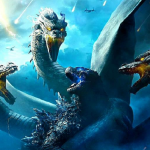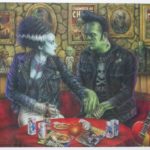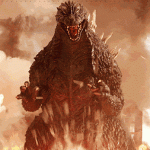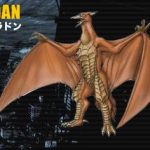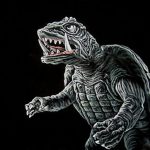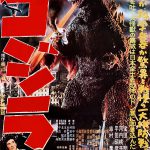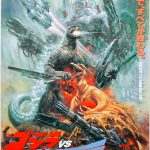The first period consists of 14 movies, from the original in 1954 until the 1975 release of Revenge of MechaGodzilla. Produced by Tomoyuki Tanaka. Under the direction of Ishiro Honda, Jun Fukuda, Koji Hashimoto, Kazuki Omori, and Shogo Tomiyama. Special effects by Eiji Tsuburaya, Koichi Kawakita, and Reijiro Koroku. Music soudtracks by the world renown Akira Ifukube, Masaru Sato.
1954-1955 During this period Godzilla appears. These movies are written in the light of showing the horror of Nuclear radiation/warfare and have a very sober effect.
1962-1964 This period ignores the 1954-1955 time period, consisting of movies where Godzilla is seen as a evil menace (winner or loser) fighting other monsters.
1964-1975 This period disregards all previous periods. Commonly know as the Godzilla vs. Monster X period, this time span consists entirely of formula movies. In the better part of these movies, Godzilla, with or without the help of one of his friends, beats the tar out of a monster invading earth (frequently controlled by space aliens). These movies are the true classics (aside from the first), a bit cheesy, but fun to watch once you accept the lack or realism.
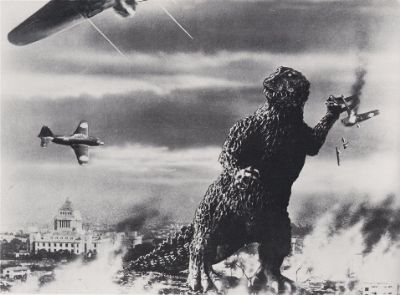
The original Godzilla in Godzilla or Godzilla, King of the Monsters! was a prehistoric monster 50 meters tall and weighing 20,000 metric tons that was disturbed by American atom bomb testing in the Pacific Ocean.
After attacking Tokyo, destroying much of the city and killing tens of thousands, Godzilla was defeated when the scientist Dr. Daisuke Serizawa (Akihiko Hirata) commited suicide out of shame and guilt after activating an experimental weapon, the Oxygen Destroyer, which completely dissolved Godzilla. It was stated at the end of the film that it was doubtful that there was only one creature, alluding not only to the many incarnations of Godzilla that would later appear but also to all the other kaiju monsters that would be featured in movies produced by Toho.
The following series would use the events of the first movie as part of their narrative but would occur in their own continuity separate from each other.
When first released in wide distribution in the U.S., its footage was reworked and supplemented with new footage featuring Raymond Burr as “Steve Martin” for general commercial release as Godzilla, King of the Monsters! in 1956, and the giant monster would be known outside Japan by the name “Godzilla” ever after.
In 1957, the American version worked its way back to Japan, where the Godzilla name also took root. This American version was the only version represented on North American home video until the release of the Gojira DVD in September 2006, which contains both the unedited Japanese theatrical version and the reworked U.S. version.
The Americanized Godzilla, King of the Monsters! was honored with a plaque on its 50th anniversary at the former location of Visual Drama, where Raymond Burr’s insert scenes were filmed by director Terry Morse. The location is now the Frank del Olmo Elementary School (named after the late Los Angeles Times columnist). The plaque is at the main entrance at 100 N. New Hampshire Ave., Los Angeles.
As alluded to at the end of the original movie, Godzilla again surfaced at first as a menace in Godzilla Raids Again (shown in the U.S.A. as Gigantis, The Fire Monster, In which Godzilla is referred to as Gigantis and Anguirus as Angurous or Angurousaurus). Setting the tone for future Showa-series films, Godzilla’s fate is uncertain at the end. His next film was 1962’s King Kong vs Godzilla.
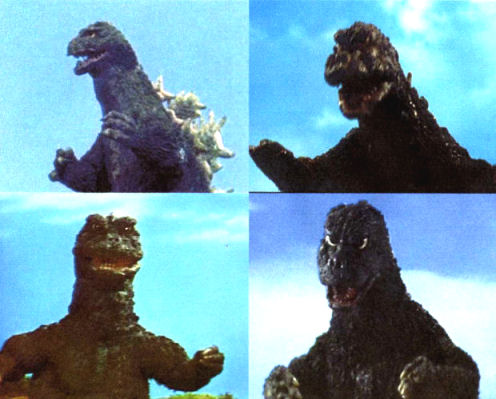
The menacing ego of Godzilla’s final film in the Showa series was 1964’s Godzilla vs.The Thing (that being the original American release title, but since known by the Japanese and international title, Mothra vs. Godzilla).
Starting with Ghidorah, the Three-Headed Monster, Godzilla took on the “good guy” persona he would wear for the remainder of the series. He would team up with Mothra, Rodan, and Anguirus along with other monsters to battle a variety of foes both mundane (Ebirah, Kumonga, and Kamacuras) and bizarre (Hedorah, Gigan, and Megalon). He even gained a son in the form of Minilla.
The series ended with Terror of Mechagodzilla in 1975. The final scene depicted Godzilla wading off into the sea, not to be seen until his return in the VS series ten years later. It is notable, however, that the earlier-released film Destroy All Monsters took place in 1999, twenty-four years after Terror of Mechagodzilla. The series could also be said to truly end with Destroy All Monsters‘s ending, which depicted all of Earth’s monsters living out the rest of their days in peace on MonsterIsland. This “jump” of dates also explains how King Ghidorah appeared in movies such as Godzilla vs. Gigan after he was killed in the earlier film.
The Toho sentai series Zone Fighter is notable in that it features Toho Kaiju from the films, such as Gigan, King Ghidorah and Godzilla himself. Produced during the 70s, Toho has gone on record stating that the events depicted in the Zone Fighter television series are part of the Showa era, taking place between Godzilla vs. Megalon and Godzilla vs. Mechagodzilla.


